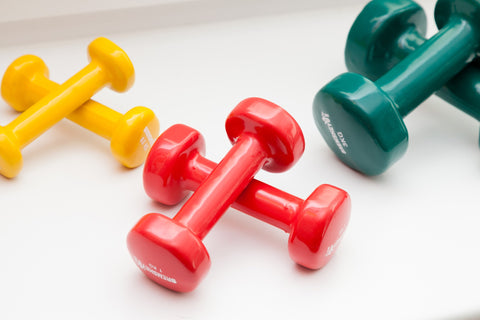Tips and Tricks for the Best Bone-Building Exercises
It may sound weird, but your bones need exercise. In fact, they can’t grow or remain strong without it. That’s because skeletons are living tissue, even though we don’t think...
Free shipping on orders $50+ within the continental US
It may sound weird, but your bones need exercise. In fact, they can’t grow or remain strong without it. That’s because skeletons are living tissue, even though we don’t think...

By Richard Garian, DC
It may sound weird, but your bones need exercise. In fact, they can’t grow or remain strong without it. That’s because skeletons are living tissue, even though we don’t think of them that way.
When it comes to building up bone density and strength through exercise, the key is weight-bearing activity.
Weight-bearing exercises are just what they sound like: movements you make while supporting weight, moving against gravity, mainly while you’re upright. From there, your exercises can be either low- or high-impact, which refers to how hard your feet hit the ground – the impact stress on your bones.
High-impact weight-bearing exercises including things like
Low-impact weight-bearing exercises often involve using machines like ellipticals, stair-steppers, and treadmills. They also include low-impact aerobics and brisk walks. These low-impact exercises are generally safer than high-impact exercises for people who have osteoporosis or face a high risk for fractures.
Try this exercise trick to strengthen specific bones:
Targeted bone loading, or TBL, is a special feature of bone-focused exercising. TBL involves doing specific activities to stimulate a particular bone (or bone area) more than it would get through normal daily movements.
TBL activities usually call for bone-loading in only one place at a time. For example, jumping rope would stimulate your lower limbs’ bone load, but not your arms or spine. Lunging exercises help increase the bone load around your hips.
One of the easiest ways to engage in TBL is through weight-lifting – though this should be done only under supervision, especially if you’re new to this form of exercise. Weight lifting allows you to focus specifically on strengthening the three most fracture-prone bones:
Work with an exercise specialist or physical therapist familiar with bone-building exercises and osteoporosis to help you develop a specific routine for your personal situation.
Tips to round out your workout
So, to build strong bones you’ll want to focus mainly on weight-bearing exercises and targeted bone loading. But there are secondary exercise goals to help keep your bones strong and safer by decreasing your risk of falls.
Flexibility training involves gentle stretching exercises designed to improve your range of motion so you’ll have greater freedom of movement in your everyday activities. Yoga and tai chi are good examples of exercises that can help improve flexibility.
Muscle strengthening exercises can vastly improve your ability to do everyday activities – like carrying groceries, walking your dog, or lifting your grandchild – more easily. Use a mix of upper and lower body exercises to target all of your muscles. Exercises involving weights or resistance bands can help build muscle strength.

Balance exercises focus on stabilizing your “core,” which refers to your abdominal, back, and pelvic muscles. Balance exercises are particularly important for preventing falls that can lead to bone fractures. You can easily work on your balance at home (if that’s all right with your doctor) by doing things like standing on one foot or doing back or side leg raises. When you’re just starting out, make sure to use a chair or wall to help you balance.
Note: Consult with a medical professional before adding any of these activities into your exercise routine.
When you already have osteoporosis, exercise can help rebuild bone strength and stimulate new bone growth – but extra caution is called for. You should always talk to your doctor before starting a new exercise program, but here are some basic guidelines to follow:
DOs:
DON'Ts:
Your cart is currently empty.
Start Shopping